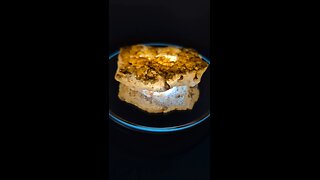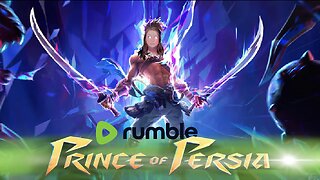Premium Only Content

My BFFs a BIF!
A banded iron formation (BIF) is a type of sedimentary rock characterized by alternating layers or bands of iron oxides and iron-poor chert (a type of fine-grained silica). Here's a detailed explanation:
Formation: Banded iron formations are thought to have formed in ancient seas where there were significant changes in oxygen levels. They date back to the Precambrian era, particularly during the Archean and Proterozoic periods, around 2.5 to 1.8 billion years ago. The process involves the precipitation of iron and silica from seawater, which was rich in dissolved iron under the anoxic (low oxygen) conditions of the early Earth's oceans.
Composition: These formations typically consist of layers of iron oxides like hematite (Fe₂O₃) or magnetite (Fe₃O₄), alternating with layers of chert. The iron layers are usually darker, while the chert layers are lighter, creating the characteristic banding.
Significance: BIFs are significant for several reasons:
Geological History: They provide evidence of the Earth's early oxygenation events, particularly the Great Oxidation Event, where oxygen began to accumulate in the atmosphere.
Economic Importance: They are major sources of iron ore, which is crucial for steel production. The iron extracted from these formations has been vital for industrial development.
Scientific Research: They offer insights into the history of Earth's climate, ocean chemistry, and the evolution of life, as the oxygenation of the atmosphere is linked to the rise of photosynthetic organisms.
Appearance: Visually, banded iron formations are quite striking with their distinct banding, which can range from millimeter to meter scale. The bands often show a clear contrast in color, with reds, browns, and blacks from the iron oxides and whites or light grays from the chert.
Locations: Some of the most famous and well-studied banded iron formations are found in regions like the Hamersley Range in Western Australia, the Lake Superior region in North America, and the Transvaal Supergroup in South Africa.
-
 0:30
0:30
RyanzRocks
2 days agoGlow Plume Slab!
15 -
 LIVE
LIVE
CassaiyanGaming
13 hours agoSaturday | Prince of Persia - 8am central
4,168 watching -
 LIVE
LIVE
Scottish Viking Gaming
1 hour ago💚Rumble :|: Saturday Special :|: I LOVE THIS RUMBLE SHIT!!
162 watching -
 0:59
0:59
PewView
22 hours ago $5.29 earnedFound grandpas stash! 😂
23.5K5 -
 LIVE
LIVE
Shield_PR_Gaming
4 hours agoIt's Level Up Time! Bloodstrike and chatting
85 watching -
 21:00
21:00
Clownfish TV
18 hours agoNPR and PBS are SCREWED! They're Getting DEFUNDED?!
20.3K37 -
 34:44
34:44
LFA TV
4 days agoMIRACLES DO HAPPEN!
51.7K -
 LIVE
LIVE
Anvilight
3 hours agoLEGO Star Wars | Skywalker Saga Saturdays! | Creator Program Day #29
62 watching -
 LIVE
LIVE
Biscotti-B23
3 hours ago $0.38 earned🔴 LIVE GLOBKU'S $300 TOURNAMENT 🏆 COMMENTATING LATER ⚔ BLEACH REBIRTH OF SOULS
34 watching -
 LIVE
LIVE
TonYGaMinG
3 hours ago🟢 KHAZAN THE FIRST BERSERKER PART 2 #RumbleGaming
58 watching